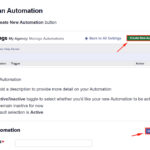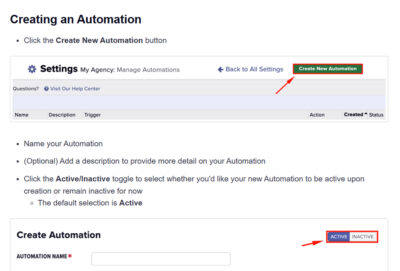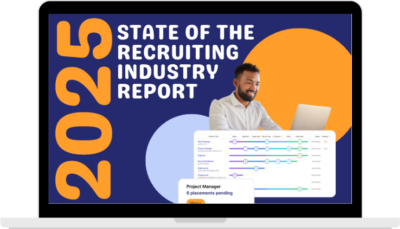(Editor’s note: The information from this article by Top Echelon Recruiting Software has been taken from an Expert Recruiter Coaching Series webinar by Bob Marshall of TBMG International titled, “The Post-Apocalyptic Recruiter: How to Thrive in Changed Recruiting World.” Click HERE to watch the video of that training webinar for free.)
The pandemic swept across the world like a firestorm. In a matter of weeks in early 2020, businesses shut their doors, economies stalled, and the global workforce was thrust into an unprecedented state of flux. For recruiters, it was the start of an apocalypse—an end to everything familiar and the beginning of something uncharted.
But now, in what Bob Marshall of TBMG International calls the “post-apocalyptic” era of recruiting, the question isn’t whether we survived. It’s what we’ve learned—and how we will thrive moving forward.
“Is the traditional office dead? Based on the numbers, maybe,” Marshall said. “But that’s not what we should be focused on. The real question is, are you prepared to recruit in a world that has changed forever?”
This article explores the key paradigm shifts defining the post-pandemic recruitment landscape—and outlines how recruiters can evolve into trusted advisors who not only survive the new world but dominate it.
From Apocalypse to Opportunity
At first, the pandemic looked like devastation. But as Marshall points out, the chaos revealed a powerful truth: the world of work is more flexible than we thought.
“One thing has emerged triumphantly,” he said. “Businesses have discovered that employees can work successfully from home—and they strongly prefer it now.”
According to a McKinsey Global Institute study cited in the webinar, over 20% of the global workforce could work remotely three to five days a week without losing productivity. For some roles, it’s as high as 40%. These aren’t temporary adjustments—they’re long-term shifts in the workplace model. And they’ve permanently changed how candidates view opportunity.
Recruiters must now advise clients on the strategic importance of flexibility. Those who do not adapt will struggle to attract top talent.
The Five Workplace Models of Tomorrow
To succeed in this transformed environment, recruiters must understand the five new workplace models identified by Harvard Business Review—each with its own implications for hiring.
1. As It Was
Employees return to a traditional 9-to-5 in-person model. Offices may look more hygienic or have staggered schedules, but structurally, nothing has changed. This model appeals to companies resistant to change—but may severely limit candidate interest.
2. The Clubhouse
A hybrid approach. Employees come to the office for collaboration and head home for focused work. Offices serve as a social and creative hub rather than a mandatory workspace.
3. Activity-Based Working
No assigned desks. Instead, employees rotate between meeting rooms, phone booths, and lounges. Designed for maximum flexibility, this model works best for agile, collaborative teams.
4. Hub-and-Spoke
Companies maintain small satellite offices closer to where employees live. This reduces commute times and allows for regional flexibility without full decentralization.
5. Fully Virtual
Employees work entirely remotely. Companies can eliminate expensive leases and prioritize hiring the best talent regardless of geography.
“We must be aware of these models,” Marshall urged. “As trusted advisors, we need to help our clients understand the trade-offs and identify which model best aligns with their future.”
Candidates Have Moved On—Have You?
The data is clear: candidates aren’t waiting for employers to figure it out. They’re already demanding remote flexibility—and walking away when they don’t get it.
A recent FlexJobs survey found that:
-
44% know someone who has quit or plans to quit due to revoked remote policies
-
29% are actively job hunting for remote opportunities
-
17% have already quit a job for that reason
-
24% would accept a 10-20% pay cut for remote work
-
58% prefer full-time remote roles; only 3% want to return to the office full-time
“That’s not a preference—that’s a tidal wave,” said Marshall. “And recruiters who are still pitching five-day-a-week, in-office roles like it’s 2019 are going to be left behind.”
Ghosting and the Wastelands
Marshall pulls no punches when discussing modern candidate behavior.
“Ghosting is rampant. But let’s be honest—we let it happen. We forgot how to qualify, how to build real rapport. We handed the keys to the resume mills and now we’re paying the price.”
The good news? The solution lies in returning to our core strengths as recruiters.
Marshall refers to the “zombie playground” of job hoppers and resume-board applicants as the wastelands. Elite recruiters don’t source from there. They target the 80% of the workforce who are currently employed, successful, and not actively job hunting.
To reach them, we need to re-embrace our role as trophy hunters—not transaction facilitators.
The Survival Vehicle: Qualify or Die
Marshall insists that surviving—and thriving—in this landscape requires two weapons: qualification and cooperation.
Qualify the Job Order
Too many recruiters waste time on low-quality job orders. Instead, ask these critical questions:
-
Do we have a signed fee agreement?
-
Is the need urgent and critical?
-
Does the client respect our role?
-
Do we have a detailed, sellable job description?
-
Is the compensation competitive?
-
Are we working with the decision-maker?
-
Do we understand the benefits and relocation policy?
-
Do we know what the hiring manager contributes to the company?
-
Has the hiring process been clearly defined?
-
Do we have full contact access?
-
Is the client ready to help sell the opportunity to top talent?
“If you don’t have these eleven points nailed down,” Marshall warned, “you’re working a job order that is not worth your time.”
Enter the Thunderdome: The Candidate Battlefield
If job orders are the map, candidates are the terrain—and you need to know how to navigate it.
“Every day, you enter the battlefield,” Marshall said. “Two people go into the Thunderdome. Only one comes out. That had better be you.”
Marshall teaches recruiters to qualify candidates just as aggressively as they do clients. His 10-point framework includes:
-
Do they have a highly marketable skill?
-
Are they realistic about job goals and titles?
-
Will they interview and start promptly?
-
Can we check references?
-
Will they follow instructions?
-
Are they businesslike and coachable?
-
Do they have strong communication skills?
-
Are they discontent with their current role?
-
Do they understand the dangers of counteroffers?
-
Are they prepared to resign for the right opportunity?
“Don’t just check boxes,” he advised. “Dig deeper. Are they serious? Are they ready? Or are they wasting your time?”
Marshall’s favorite acronym for understanding motivation is CLAMS:
Challenge, Location, Advancement, Money, Stability.
Those are the five reasons candidates move. Identify which ones apply—or walk away.
Recruiter Heroes Wanted
The post-apocalyptic recruiter is more than a survivor. They are a guide, a strategist, and above all—a trusted advisor.
“Explain how you’re different,” Marshall said. “Hiring managers have used average recruiters before. They need to know what it’s like to work with a great one.”
That means setting expectations early. Build trust with both clients and candidates through mutual commitments:
-
Agree on timelines
-
Share expectations
-
Provide regular updates
-
Require cooperation and feedback
Your Survival Kit
Marshall ends with two final principles:
-
Be selective with clients. Only take job orders that meet the highest standards of urgency, clarity, and cooperation.
-
Qualify and re-qualify candidates. Don’t assume alignment. Confirm it again and again throughout the process.
“You’re not just trying to fill jobs,” he said. “You’re building a survival community—one that thrives in this new world. That means kicking out the old ways and the wrong people.”
Live for Today, Recruit for Tomorrow
In the final moments of the webinar, Marshall invoked a quote from James Clear’s Atomic Habits:
“You are richer than 93% of all people, not in money, but in time.”
“You have what every king, queen, pharaoh, and celebrity of the past would give all their wealth for—and that is today,” Marshall said. “Live for it.”
In the wake of the apocalypse, the recruiters who will succeed are not the ones who wait for things to return to normal—but the ones who redefine what normal is.
So ditch the resume mills. Abandon the zombie job boards. Embrace qualification, build trust, and move boldly into the new world of recruiting.
Be the post-apocalyptic recruiter your industry needs.
Want to dive deeper?
Access Bob Marshall’s full Elite Recruiter Masterclass or revisit his 17+ recorded webinars in the Top Echelon Archives. The new world needs elite recruiters—make sure you’re one of them.









